If you don’t know about monkfish, or if you’ve ever seen whole monkfish at a seafood market, you’ve probably been tempted to pass it by. But beauty is in the eye of the beholder, and tender, juicy seafood deliciousness is the reward for taking a chance on this new-to-you variety of fish. Find a reputable fish monger that specializes in sustainably harvested seafood, and enjoy trying something new more often!
Post updated January 2022. This post was originally created in April 2019 in collaboration with Almanac Fish in St. Paul, MN (which is now permanently closed) in effort to promote responsibly-sourced sustainable seafood. All opinions, text, and photos herein are my own.
About Monkfish
When purchasing any protein, look for fresh, bright, clear colors and textures. There should be no indications of dryness or dull, cloudy colors. While fish will always smell like fish, it shouldn’t smell like anything but fresh fish just out of the water.
Reputable fish mongers generally display the fish on ice and make sure it’s well-refrigerated at all times. The best fish mongers will share their cooking knowledge without hesitation, and you’ll find that they have the best tips to share from experience. Take notes!

About Monkfish Tails: Taste and Textures
Monkfish bodies are mostly head and belly, so their “fillets” are called tails. In larger fish, the cheeks can also be harvested. Monkfish tails – which closely resemble long, thin tenderloins – are what you’ll see most often in fish markets. The tails in this photo are about 1 pound (left) and 1-3/4 pounds (right).
Monkfish flesh has a high moisture content which causes it to shrink when cooked (as most proteins do). Monkfish tails also have a membrane – the blue-ish/purple-ish “skin” that you see in these photos. The thoughtful fishmonger who prepared these beautiful tails for me (Hey, Josh!) left a little of the membrane on these tails for reference because he knew they’d be photographed and shared in an informational blog post.
While I’m no expert, I’ve filleted my share of fish and have no issue removing any remaining membrane with a sharp knife. For ease and convenience, you can generally ask your fish monger to remove it completely. But if you ever need to do it yourself, here are a few quick tips:
- Pat the tails dry with paper towels
- Using the tip of a very sharp fillet knife, lift an edge of the membrane. Hold that edge with your subordinate hand. Then, holding the knife in your dominant hand, carefully slide the blade between the membrane and the flesh. Keep the blade angled slightly upward to avoid removing too much flesh along with the membrane.
- The membrane will come off in small strips or pieces. Repeat the steps until the membrane is mostly removed.
For the record, the membrane is edible, it’s just a bit tough and conflicts slightly with the otherwise tender, deliciousness of cooked monkfish. And, as mentioned above, monkfish flesh shrinks when it cooks. The membrane shrinks even more – like a rubber band – and will contort the cooked fish slightly. This may, or may not, impact how your finished dish looks. Just something to be aware of.
About Monkfish: Flavors and Pairings
You’ll hear about monkfish referred to as “poor man’s lobster” because they often feed on crustaceans. As such, the flavor of monkfish does resemble that of lobster.
The firm texture of this fish lends itself well to many preparations from baking or roasting whole, to skewering and grilling. You can also cut it into cubes, medallions, or strips and sauté it in a pan with butter, seasonings and fresh herbs. Monkfish is a wonderful option for soups and chowders. Stir fry it with fresh vegetables and serve with rice or noodles.
Pro Tip: Use monkfish to fill out fancy lobster dishes! Save yourself a little time and money by adding monkfish to the dish itself. Then, “garnish” with lobster claws, claw meat, etc., for impact. (You can share your clever culinary secret after everything is devoured.)
Bright, acidic and citrus-y flavors pair well with monkfish. This firm, flavorful fish can also hold its own with richer ingredients such as Camembert, Parmesan, pancetta, and fresh dill! In fact, we found that monkfish rounded out the flavors beautifully in our Monkfish Mac ‘n Cheese.
Try this take on Lobster Mac, and you’ll see what I mean!
RECIPE : Monkfish Mac ‘n Cheese with Peas and Pancetta
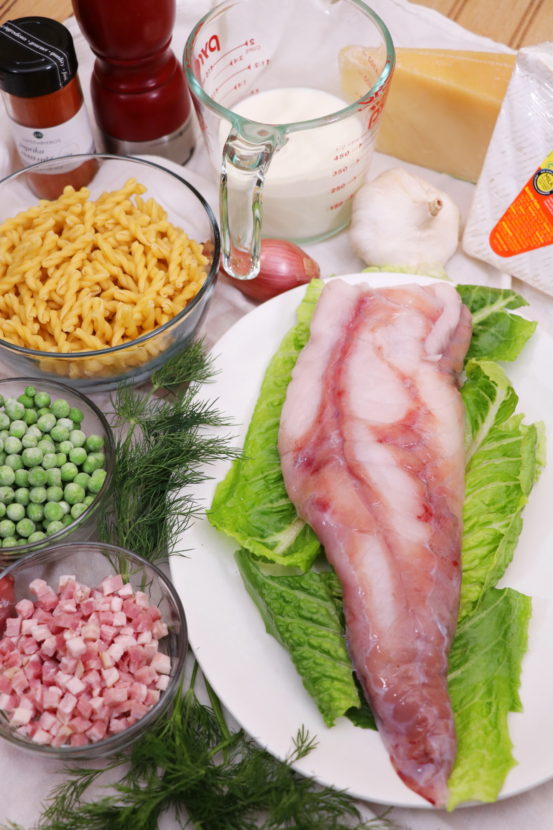
Monkfish is also excellent with curries! I tried my hand at making a vibrant curry from scratch, and absolutely loved it! There’s so much more flavor when you make it yourself, and you can adjust all of the flavors to your liking.
RECIPE : Monkfish Curry with Warm Bok Choy & Pea Pod Salad
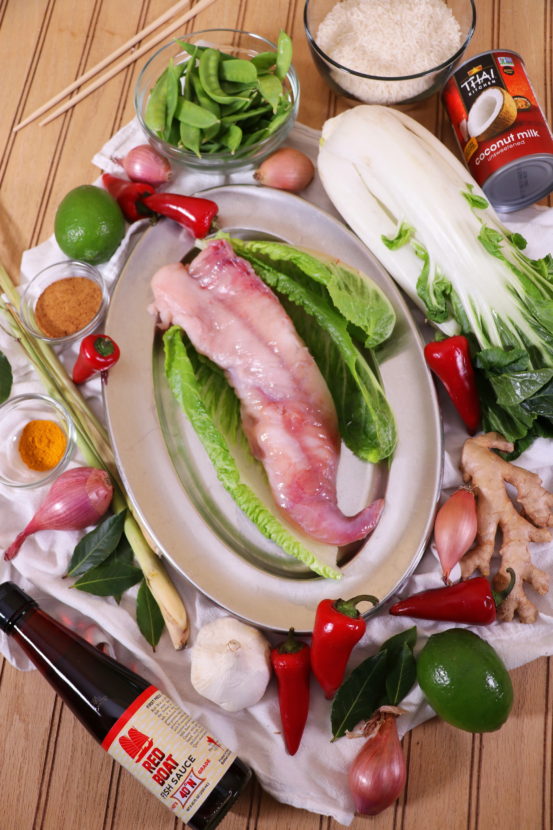
Sustainable Seafood
It’s important to focus on responsibly-sourced sustainable seafood. Thankfully, we can learn more about it through programs like Smart Catch which is:
“…an educational sustainable seafood program created by chefs for chefs with the purpose of increasing the sustainability of the seafood supply chain… the program provides training and support to chefs so they can serve seafood fished or farmed in environmentally-responsible ways. By becoming a Smart Catch Leader and earning the Smart Catch seal, chefs give consumers a simple way to identify and support their restaurants.” -jamesbeard.org
Check out the admirable list of Minnesota Restaurants that are participating in the Smart Catch program! We’re so fortunate to have an amazing resource driving and supplying the best seafood available right in out own back yard.
Have you cooked monkfish? I’d love to know how you prepared it!
Please leave a note here on the blog in the comments below, or share your creations on Facebook, Pinterest, Instagram, and/or Twitter.
Make sure to hashtag #baconfatte or tag @baconfatte in your social media posts!
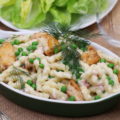
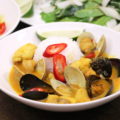

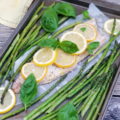







[…] you’d like to learn a little more about monkfish, here is some additional information how to purchase and prepare monkfish along with amazingly delicious recipe for Monkfish Mac ‘n Cheese with Peas and […]